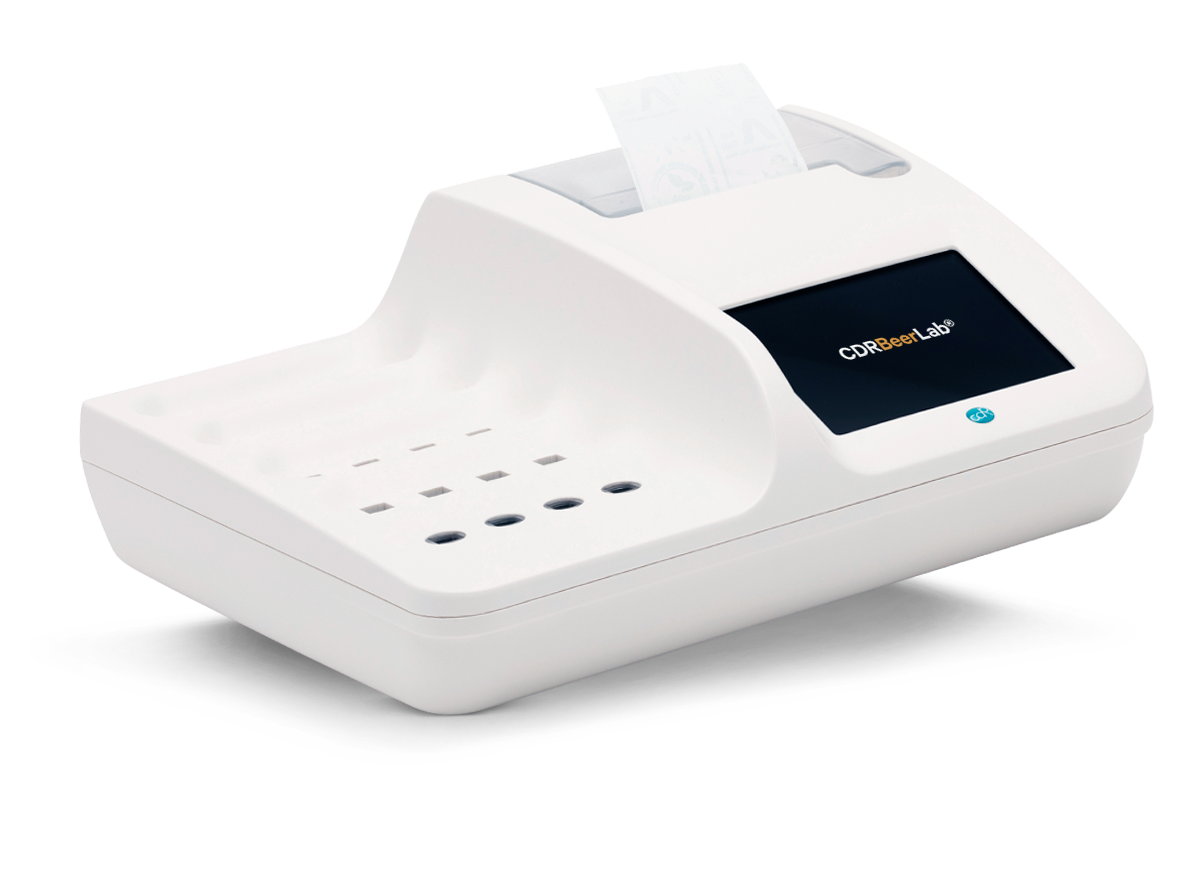Acetaldehyde (Ethanal) analysis in beer
Acetaldehyde is a by-product of yeast metabolism formed during alcoholic fermentation. Its formation depends on the fermentation conditions, including an excessively low fermentation rate. At low concentrations (<10–15 mg/L), acetaldehyde may contribute to a slight fruity-green note, but at higher concentrations it leads to unpleasant flavors reminiscent of green apple, freshly cut grass, or raw pumpkin. This defect is highly noticeable and compromises the sensory quality of the beer.
Method
Test type: End Point.
Time testing: 6 minutes.
Analysis sessions with multiple samples are possible up to a maximum of 16 tests for CDR BeerLab® and 3 tests for CDR BeerLab® Junior.
...
Sample treatment
Use on beer or wort. The beer sample must be degassed using the ultrasonic bath (code 222062) before sampling. In case of tests performed on must, the sample shall be first centrifuged (code 222061) or filtered (code 300210).
Principle of the test
Acetaldehyde, in alkaline environment, is oxidized enzymatically to acetic acid with the consequent production of NADH. The increasing of the absorbance, measured at 366 nm in end-point, is proportional to the concentration of acetaldehyde in the sample.
Calibration curve
The calibration curve of CDR BeerLab®, obtained using reference methods, potentiometric titration, confirms the excellent linearity of the system over the whole testing range.
...
Reagent test Kits
Code*300417: 10 tests
Measuring range
| Analyses | Measuring range | Resolution | Repeatability |
|---|---|---|---|
| Acetaldehyde (Ethanal) | 9 - 150 mg/L | 1 mg/L | 3 mg/L |
The Analyzers for process and quality control in beer brewing
CDR BeerLab®
Complete analysis panel, supplied already configured
Up to 16 determinations simultaneously
Possibility of carrying out analyses of the same sample
Integrated printer
Full connections (LAN - USB - Bluetooth barcode/QR code reader)
CDR BeerLab® Jr
Partial analysis panel, customisable configuration
Up to 3 determinations simultaneously
Wireless connection to external printer
USB connections
